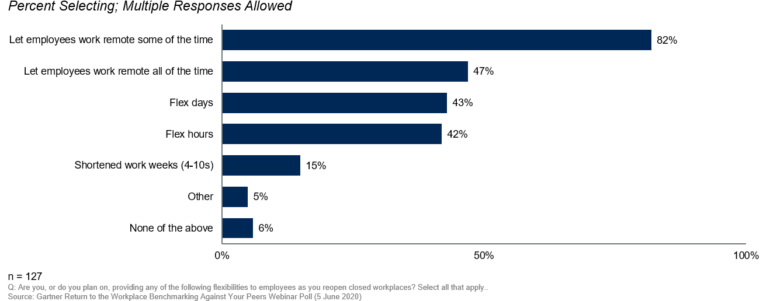Employee Experience
How time tracking can improve employee productivity and mental health
For almost half of companies, remote working is here to stay. This means that isolation, burnout, and stress-related issues are becoming more commonplace. Here’s how tracking employees’ time can address these challenges.
Since the onset of COVID-19, companies across the US have been forced to adopt remote working models. Once the pandemic subsides, 47% of businesses plan to allow employees to keep working from home full-time.

Many companies have reported higher productivity levels since teams moved out of the office. However, long-term remote working also brings a lot of challenges.
Working from home has led to a lot of employees working more hours than ever before. Burnout and other chronic illnesses can stem from spending too much time working, while continued isolation is also a big issue for companies to combat.
In this article, we’ll share how employees can use time tracking as a tool to discover how much of their day is being devoted to work so they can regain control of the precious commodity of time.
The perils of workday disorganization
Lost time
Have you ever felt like you didn’t complete anything meaningful after a busy day, or that you didn’t complete everything on your daily to-do list?
A lack of organization is often the culprit.
Why?
Because you don’t know how much time is needed on each task or when you can realistically expect to complete it.
Delayed projects
When employees don’t schedule their time, they may not focus as much on tasks that need more in-depth work.
Moreover, teams who don’t keep track of their time often struggle with project management and experience project delays. This can lead not only to frustration but also have a detrimental effect on a company’s revenue.
Lower-quality work
Lacking a proper work schedule can lead to employees feeling like they lack direction. When this happens, their attention span may be scattered in too many directions.
If employees aren’t intentional with where they focus their energy, their work likely won’t match up to their true capability. Your employees’ mental wellbeing will also be impacted due to higher levels of stress.
The benefits of time tracking for employees
One solution to the above problems is time tracking. In addition to tracking their time in general, employees can boost their workplace wellbeing and benefit in the following ways:
Better concentration
Have you ever gone into a workday pondering what you need to do? Chances are, you might have a hard time focusing on tasks for extended periods.
Maybe you’re spending too much time on any given task. That’s because many people can only focus intensely for a limited amount of time.
When employees track their time, they can better optimize their days to include regular breaks. This allows them to re-energize and renew, which can improve productivity.
Avoid burnout
According to Qualtrics research, 47% of workers have experienced burnout since the beginning of COVID-19. This isn’t surprising – longer hours along with pressures at home are challenging to juggle.
![]()
Time tracking can help employees to avoid burnout by identifying where their time is being spent in relation to the established goals set by the team.. They can also use these tools to track their long-term progress.
When employees know how they’re spending their time, they can better organize their workday and focus on what’s most important. They will know when to switch off, and also focus more intensely during the hours they’ve scheduled for work.
More meaningful work completed
Our research has also found that since the pandemic began, 52% of people have said they feel like their work has more purpose.
Helping your employees to manage their time allows them to focus more on meaningful tasks. In the long term, they will maintain their high sense of purpose and report greater job satisfaction.
How to help employees track their time and manage their working lives
Get them to write down the benefits of managing their time better
Get your employees’ input and have them write down the benefits of tracking their time. Besides higher productivity, encourage them to think on a personal level. For example, could they free up more time to spend with their kids, and will they be less stressed in their free time?
Invest in a time tracking app for your employees
Tracking time is possible with calendars and stopwatches, but this can become overwhelming – fast. Manually measuring everything also wastes a lot of time.
Instead, consider investing in an employee time tracking app. A time tracking platform can be used to see whether your employees are working too long and help them manage their days better. This also allows them to set healthy boundaries.
Encourage breaks and proper rest
Taking regular breaks and resting may seem like common sense. Unfortunately, many businesses still do not remind their employees of how important these are; leading to an impact on employees’ happiness, which stops them from maximizing their skills.
Research from Tork found that 90% of Americans felt more refreshed after stepping away from their computer screen at lunch. Those employees also had a more enjoyable workplace experience, both getting more done and feeling valued.
When tracking employees’ time, make sure they’re taking regular breaks. They’ll feel empowered to give you more in return.
Are you interested in finding out more about how the workplace will change in 2021? Download our employee experience trends report here.
For more help with improving employee wellbeing, take a look at our solutions.
Find out how the workplace will change in 2021
